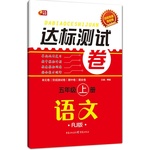题目内容
We Chinese are not big huggers. A handshake or a pat on the shoulder is enough to express our friendship or affection (love) to one another. So when our newly-acquainted Western friends reach out in preparation for a hug, some of us feel awkward. Many questions go through our head. Where should I put my arms? Under their armpits or around their neck? What distance should I keep? Should our chests touch?
It’s even more difficult with friends from some European countries. Should I kiss them on the cheek while hugging? Which side? Or is it both cheeks? Which side should I start on?
But it isn’t just people from cultures that are conservative(保守的) in expressing physical contact who find hugging confusing.Hugs can cause discomfort or even distress(pain) in people who value their personal space.
In a recent article for The Wall Street Journal, US psychologist Peggy Drexler said that although the US remains a “medium touch” culture, Americans do seem to be hugging more. From politicians to celebrities(famous people), hugs are given to friends, strangers and enemies alike; whether they are willing or not; and the public has been quick to pick up the practice.
Public figures know that nothing expresses likeability(亲和力)like a good hug. US First Lady Michelle Obama has put her arms around icy foreign leaders like Russian Prime Minister Dmitry Medvedev and the Queen of England on the latter occasion actually breaking the rule of royal manners.
But not all are grateful to be embraced(hugged), even by the most influential and famous. To them, any hug is offensive(冒犯的) if it’s not sincere.
Amanda Hess, writing for US magazine Slate, says public figures should stop imposing(强加) hugs on everyone they meet. For them, a hug is rarely a gesture of sincere fellowship, compassion or affection. It’s all part of a show. Hugs are falsely intimate power plays used by public figures to establish their social dominance(主导) over those in their grasp.
Cecilia Walden, a British journalist writing for The Telegraph who lives in New York, holds the same opinion. “Power-hugging”, as she calls it, is “an offender dressed up as kindness”. It has become a fashion in the US where “bosses are already embracing their staff (either shortly before or after firing them), men and women ,their friends or enemies, in a thousand cheating displays of unity”.
1.From the first third paragraphs, we can see that ___________.
A. we Chinese people don’t know how to hug
B hugs can bring pressure to people when used improperly
C. people from European countries often get puzzled about hugging
D. people in Western countries seldom use hugs to express their physical closeness
2.The example of US first lady Michelle Obama is given to show that __________.
A. hugs are forbidden in England
B. she is much liked by American people
C. Americans hold a “medium touch ”culture
D. public figures know hugging functions well in public
3.Which of the following is closest in meaning to the underlined phrase “pick up the practice”?
A.Follow the trend.
B.Enjoy the medium touch culture.
C.Give hugs to enemies.
D.Resist physical touch.
4.What can be the best title of this passage?
A. Hugs, tricky affair? B. Hugs, vital or not?
C. Hugs and public figures D. Hugs and power
 芒果教辅达标测试卷系列答案
芒果教辅达标测试卷系列答案书面表达
众所周知,地震是一种可怕的自然灾害,近期日本和厄瓜多尔相继发生7级以上大地震,造成了巨大的人员伤亡和财产损失。那么当地震来临我们需要怎样去做呢?
在教室时 | 藏在课桌下面等待老师指示 |
在家时 | 藏在起居室或厨房的桌子下。不要去窗户旁边也不要去阳台(balcony) |
在街上时 | 不要站在建筑物,栅栏(fence)或墙边,也不要站在树下,要赶快到安全的露天的空地去 |
请根据以上信息写一篇文章,题目已给出。
注意:词数100左右。
What to Do During an Earthquake
As we all know, an earthquake is a kind of terrible disaster. So what should we do when an earthquake comes?


 ),并在其下面写出该加的词。
),并在其下面写出该加的词。